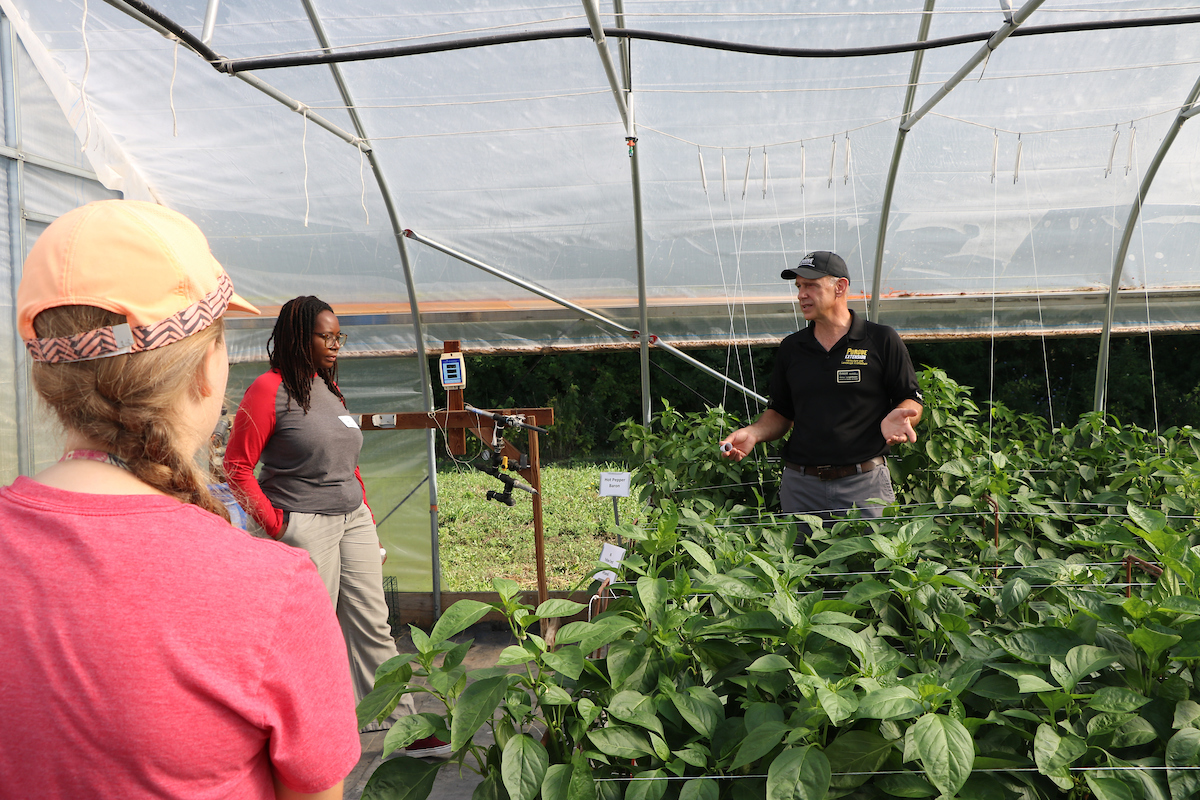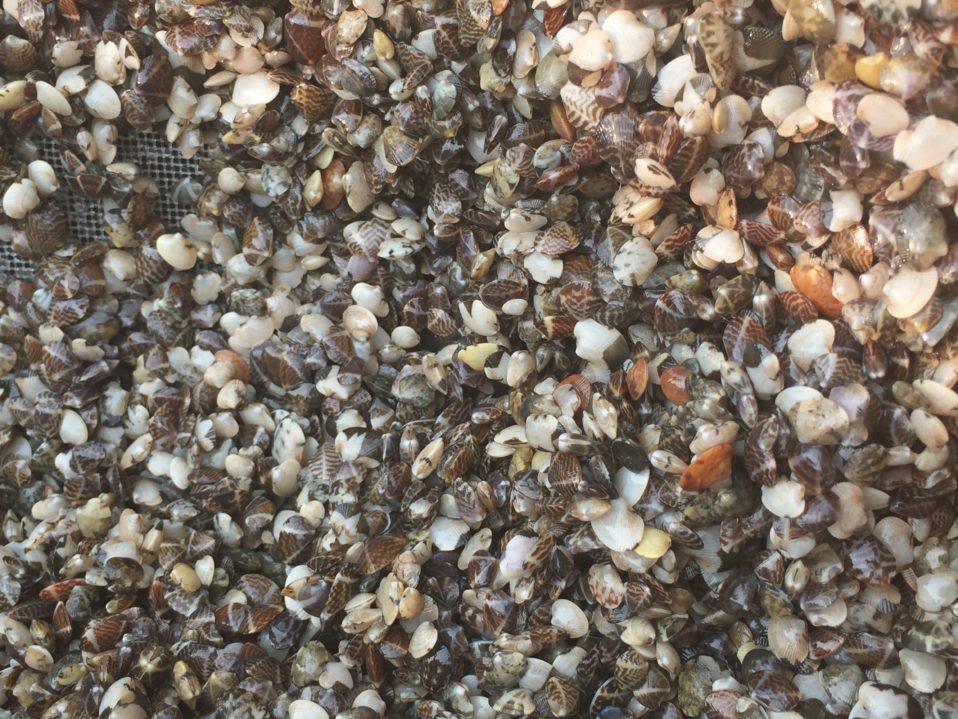Report on the Regional Initiative to Enhance Soil Health in Togo
Introduction: Aligning Agricultural Development with Sustainable Development Goals
A regional initiative is addressing critical agricultural challenges in Togo, directly contributing to the achievement of several Sustainable Development Goals (SDGs). The primary issues of poor soil quality, declining crop yields, and inefficient fertilizer use pose significant threats to national food security and farmer livelihoods, undermining progress towards SDG 2 (Zero Hunger) and SDG 1 (No Poverty). In response, the Regional Hub for Fertilizer and Soil Health for West Africa and the Sahel, an initiative under the Economic Community of West African States (ECOWAS), is implementing a program to improve soil fertility and promote sustainable agricultural practices.
A Collaborative Framework for Sustainable Impact: SDG 17 in Action
The success of this initiative is founded on a multi-stakeholder partnership, exemplifying the principles of SDG 17 (Partnerships for the Goals). The Regional Hub, launched in 2024, unites a diverse group of organizations to provide technical assistance and drive investment in soil health.
Key Partners:
- International Institute of Tropical Agriculture (IITA)
- International Fertilizer Development Center (IFDC)
- OCP Africa
- African Plant Nutrition Institute (APNI)
- Mohammed VI Polytechnic University (UM6P)
- The World Bank, via the AICCRA project
- Government of Togo (Ministry of Agriculture)
- Institut Togolais de Recherche Agronomique (ITRA)
Strategic Interventions for Responsible Production and Consumption (SDG 12)
The Regional Hub’s strategy focuses on data-driven, site-specific solutions to promote efficient resource management, a core tenet of SDG 12 (Responsible Consumption and Production).
Core Methodologies:
- Data-Driven Fertilizer Recommendations: The initiative utilizes advanced data science and modeling to develop fertilizer recommendations tailored to specific local soil conditions and crop requirements. This approach supports climate-smart agriculture and prevents the overuse of fertilizers.
- Adherence to 4R Nutrient Stewardship: All recommendations align with the principles of Integrated Soil Fertility Management (ISFM) and the 4Rs: applying the Right source of nutrients at the Right rate, at the Right time, and in the Right place.
- System Assessment and Capacity Building: A comprehensive assessment of Togo’s Soil Information System (SIS) was conducted, identifying critical gaps in the national infrastructure.
Identified Gaps in Togo’s Soil Information System:
- Fragmented and poorly shared soil data.
- Underutilization of the existing FertiTogo SIS platform.
- Limited capacity in soil laboratories at ITRA and the University of Lomé.
To address these gaps and prevent resource wastage, the Hub has initiated the implementation of Nutrient Omission Trials (NOT). This scientific protocol precisely identifies soil nutrient deficiencies, ensuring that fertilizer applications are targeted and effective, thereby protecting terrestrial ecosystems as outlined in SDG 15 (Life on Land).
Projected Outcomes: Advancing Food Security and Sustainable Livelihoods
Empowering Farmers and Strengthening National Systems
The initiative is designed to generate lasting benefits that directly support key development targets. By providing farmers with actionable information on soil health management, the project aims to improve productivity sustainably, without causing further soil degradation. This empowerment is crucial for enhancing farmer incomes (SDG 1) and ensuring national food security (SDG 2).
The International Fertilizer Development Center (IFDC), leading the activities in Togo, emphasizes that collaboration with the Togolese government and research institutions like ITRA is fundamental to success. This partnership ensures that interventions are aligned with national priorities for agricultural transformation.
Building a Sustainable Legacy
The project’s long-term vision is to establish a robust, accessible information system for soil health in Togo. This will not only guide local interventions but also inform international partners on how to best support the country’s agricultural sector. By utilizing local resources and expertise for implementation, the Regional Hub is facilitating a critical transfer of capacity. This ensures that the knowledge and systems will remain in place after the project concludes, fostering resilience and sustained progress towards the Sustainable Development Goals.
Analysis of Sustainable Development Goals (SDGs) in the Article
Which SDGs are addressed or connected to the issues highlighted in the article?
-
SDG 2: Zero Hunger
The article is fundamentally about improving agriculture to ensure food security. It directly addresses the struggles of farmers in Togo with “poor soils and declining yields” and aims to “improve productivity for sustainable food security in the country.”
-
SDG 15: Life on Land
The initiative’s core focus is on soil health. By addressing “poor soils,” promoting “Integrated Soil Fertility Management (ISFM),” and aiming to prevent the “degradation of their soil,” the project directly contributes to protecting and restoring terrestrial ecosystems.
-
SDG 12: Responsible Consumption and Production
The emphasis on “efficient fertilizer use” and the “4Rs of nutrient stewardship” (right source, right rate, right time, and right place) aligns with the goal of achieving sustainable management and efficient use of resources, reducing waste and environmental impact.
-
SDG 17: Partnerships for the Goals
The entire initiative described is a multi-stakeholder partnership. The article highlights the “Regional Hub” as a “collaborative initiative” involving ECOWAS, research institutes (IITA, ITRA), development centers (IFDC), private sector partners (OCP Africa), and international bodies like the World Bank. This collaboration is essential for achieving the project’s goals.
What specific targets under those SDGs can be identified based on the article’s content?
-
Target 2.3: Double the agricultural productivity and incomes of small-scale food producers.
The article explicitly states the initiative helps “smallholder farmers” to “improve their productivity.” The project provides them with knowledge and tools like “site specific fertilizer recommendations” to increase their yields, which is the first step toward increasing income.
-
Target 2.4: Ensure sustainable food production systems and implement resilient agricultural practices.
The project promotes “climate-smart, efficient, and sustainable agriculture.” By improving soil health and fertility management, it helps create more resilient agricultural systems that can maintain productivity and “ensure that information for soil health management is readily available,” contributing to long-term sustainable food production.
-
Target 15.3: Combat desertification, restore degraded land and soil… and strive to achieve a land degradation-neutral world.
The initiative directly tackles the problem of “poor soils” and aims to “improve fertility and soil health.” The article mentions the goal is to help farmers improve productivity “without… accelerating the degradation of their soil,” which is a direct effort to restore degraded land and prevent further degradation.
-
Target 17.6: Enhance North-South, South-South and triangular regional and international cooperation on and access to science, technology and innovation.
The Regional Hub is a clear example of this target in action. It “brings together diverse stakeholders” from different sectors and countries to use “data science and advanced modelling” and share knowledge to solve a regional problem. The assessment of Togo’s Soil Information System (SIS) and plans to make data more accessible is a key part of this.
-
Target 17.9: Enhance international support for implementing effective and targeted capacity-building in developing countries.
The article identifies “limited capacity in soil laboratories” as a critical gap. A key outcome of the project is the “transfer of capacity, which will be needed when the project ends,” demonstrating a clear focus on building local capabilities for long-term success.
Are there any indicators mentioned or implied in the article that can be used to measure progress towards the identified targets?
-
Indicator: Agricultural Productivity/Yields
This is implied by the focus on addressing “declining yields” and the stated goal to “improve their productivity.” Progress can be measured by tracking the change in crop yields for farmers participating in the program.
-
Indicator: Soil Health and Nutrient Status
This is directly mentioned. The project assesses the “nutrients status of soils” and uses methods like “Nutrient Omission Trials (NOT) protocol” to determine what the soil lacks. Measuring changes in soil fertility and nutrient balance over time would be a direct indicator of success.
-
Indicator: Functionality and Use of a National Soil Information System (SIS)
The article explicitly mentions the assessment of “Togo’s Soil Information System (SIS) status” and its underused platform, “FertiTogo.” An indicator of progress would be the increased functionality, data sharing, and usage of this system by farmers and stakeholders.
-
Indicator: Local Institutional Capacity
This is mentioned in the context of “limited capacity in soil laboratories” and the project’s aim to promote a “transfer of capacity.” Progress could be measured by the improved capabilities of institutions like the Institut Togolais de Recherche Agronomique (ITRA) and the University of Lomé to conduct soil analysis and research independently.
SDGs, Targets and Indicators Summary
| SDGs | Targets | Indicators |
|---|---|---|
| SDG 2: Zero Hunger |
2.3: Double the agricultural productivity and incomes of small-scale food producers.
2.4: Ensure sustainable food production systems and implement resilient agricultural practices. |
– Agricultural productivity/yields of smallholder farmers. – Adoption of sustainable agricultural practices (e.g., ISFM, 4Rs). |
| SDG 15: Life on Land | 15.3: Combat desertification, restore degraded land and soil. |
– Measured improvements in soil health and nutrient status. – Reduction in the rate of soil degradation. |
| SDG 12: Responsible Consumption and Production | 12.2: Achieve the sustainable management and efficient use of natural resources. | – Efficiency of fertilizer use. |
| SDG 17: Partnerships for the Goals |
17.6: Enhance regional and international cooperation on and access to science, technology and innovation.
17.9: Enhance international support for effective and targeted capacity-building. |
– Functionality and usage rate of the national Soil Information System (SIS). – Improved capacity of local soil laboratories and research institutions. |
Source: farmersreviewafrica.com







